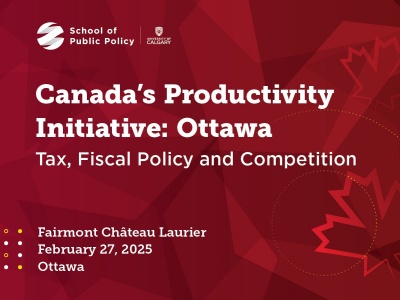Alberta is changing the game on internal trade

Canada is a trading country, or so we tell ourselves.
We embrace international trade, no doubt, and are expanding opportunities abroad with comprehensive deals such as CETA and TPP. But we have real difficulty trading with ourselves.
We always have. At Confederation, well over 90 per cent of provincial trade was with other countries rather than with each other. It’s improved since, but still today a large majority of our trade remains international.
Yes, Canada is a big place. Yes, we don’t live close to one another. And yes, terrain in many places is a challenge. But we choose to make a tough situation worse. Businesses in one province face significant barriers that artificially thicken our borders and cost the Canadian economy.
Food standards, inspections, trucking rules, registry requirements, labour certifications, provincial securities regulations, workers’ compensation rules and so on, vary from one province to the next. Sometimes substantially. And then there are explicit barriers: In Manitoba, for example, you can’t provide legal services (in some cases) unless you maintain a physical office there.
These are hard problems to solve. Provincial and federal leaders have been trying for decades. With only limited success. But a new approach, led by Alberta, may (a very tentative may) break the logjam.
At July’s first ministers meeting between provincial and territorial leaders, Alberta Premier Jason Kenney announced the province would unilaterally open much more of its government purchases to competitive bidding, regardless of which province the company is from.
Going further, the Premiers agreed to explore a bigger prize: mutual recognition of professional and skills certifications and credentials in all provinces. If something is good enough in Ontario, why shouldn’t it be good enough in Prince Edward Island or British Columbia? But, said Mr. Kenney, if there’s not an agreement soon, Alberta will again go it alone and unilaterally recognize credentials from elsewhere.
This willingness to open one’s own market, without direct reciprocation by others, is not just new – it’s a game-changer. And one that matters for all Canadians.
A team at Statistics Canada, using incredibly rich data, estimate internal trade costs add nearly 7 per cent to the cost of goods we buy. And this doesn’t count the much larger costs facing service providers such as accountants, lawyers, financial professionals and so on.
The consequences for Canada’s economy are large. The most recent estimate comes from the International Monetary Fund (whose research team I was a part). We estimate that removing internal trade costs might boost Canada’s economy by nearly 4 per cent. That’s massive. It means $80-billion in economic potential each year is lost because of internal trade barriers – that’s nearly $5,700 for every family.
The traditional way provinces approach the problem is slow and limited.
Consider a recent success story. Different provinces require different first-aid kits in workplaces. What’s required in one region won’t work in another. Imagine purchasing ten different kits to operate across Canada! But after negotiations over the past two years, a single standard is on its way and businesses will save an estimated $3-million a year as a result. That’s a win, but multiply it by tens of thousands for a scale of the challenge ahead.
It’s just not possible to fully liberalize trade in this piecemeal, negotiated way.
Alberta’s push for comprehensive mutual recognition is new, and might work. It’s also quick, relatively easy, and if broadly applied could sweep many of our largest internal trade barriers aside.
And the best part is this: Provinces can act alone. Some might object that unilateral moves give up “bargaining chips” that a province can use to induce others to liberalize. Perhaps; but that shouldn’t matter.
First, we’ve spent the last quarter century negotiating national deals – beginning with the Agreement on Internal Trade in 1995. These deals are narrow and yield only modest gains.
Second, working together is best, but going it alone is almost as good. Consumers win when prices fall; so do businesses buying inputs. The model used in the IMF report suggests that if Alberta unilaterally lowers its own trade barriers it can capture 60 per cent of the total gains available if provinces acted together.
Finally, it’s politically hard to liberalize, but maybe not as hard as we think. The status-quo benefits some, and those groups know who they are, while the costs are spread broadly. Most of us barely notice. Acting alone risks a backlash from concentrated interests, or so that’s the concern.
But what if the politics are manageable? What if governments are too hesitant? If a large province such as Alberta unilaterally moves, and shows opening its market can succeed, then others might follow. It’s certainly worth a try.
Canada’s internal trade costs are real and they shrink our economy. To tackle this problem, we don’t need provinces angling for leverage; we need leadership.
Trevor Tombe is an associate professor of economics at the University of Calgary and a research fellow at the School of Public Policy.
Source: The Globe and Mail


